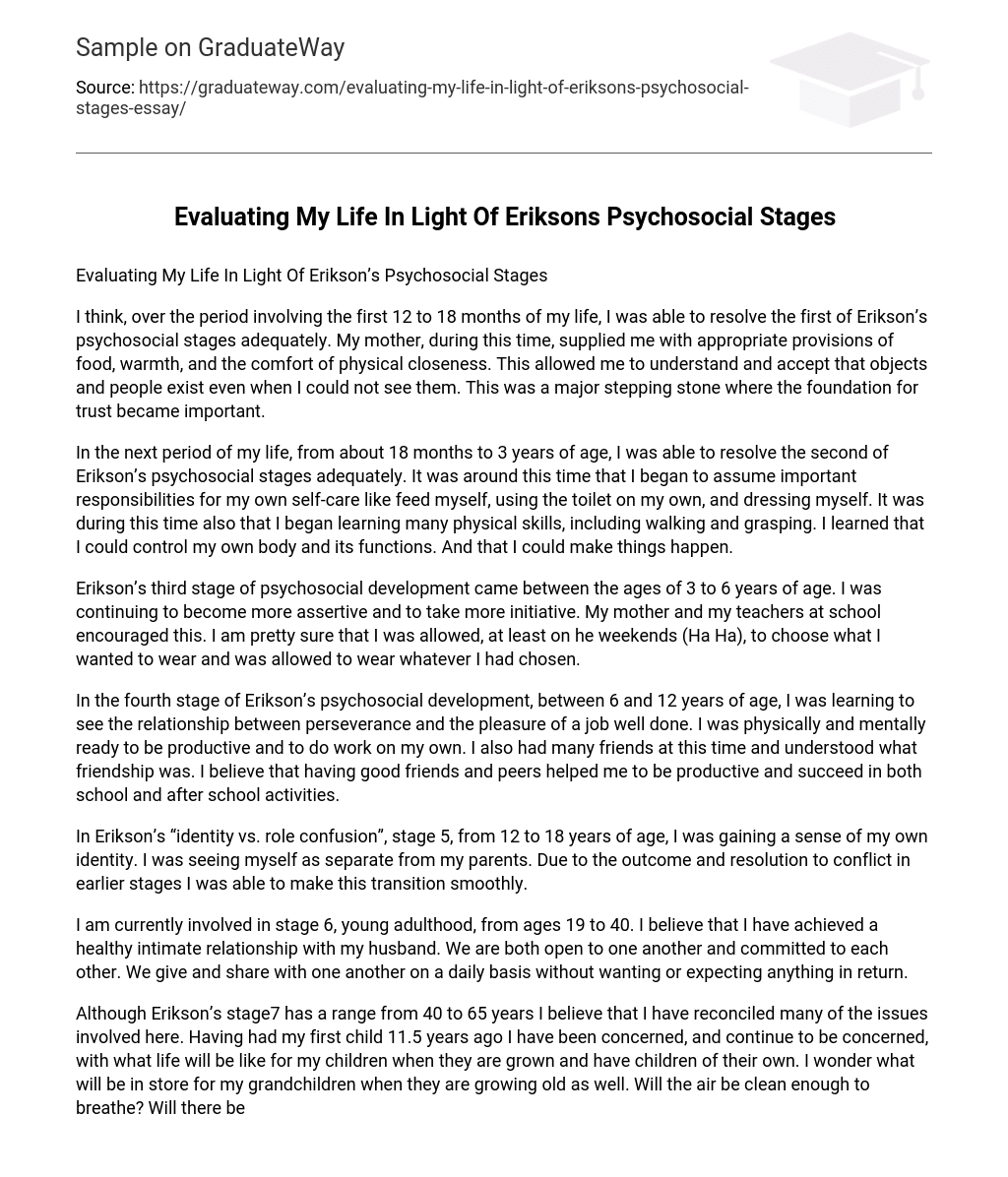During the first year and a half of my life, I feel that I accomplished Erikson’s initial psychosocial stage. My mother provided me with nourishment, warmth, and physical closeness, which allowed me to grasp the concept that objects and people exist even when they are not visible. This experience formed a basis of trust that played a pivotal role in my overall development.
Between the ages of 18 months and 3 years, I went through Erikson’s second stage of psychosocial development. During this time, I achieved important milestones like taking on responsibilities for my self-care, such as feeding myself, using the toilet by myself, and dressing myself. I also developed physical skills like walking and grasping that gave me control over my body. Furthermore, this stage was when I started to learn how to influence and achieve desired outcomes.
During Erikson’s third stage of psychosocial development, which occurs between the ages of 3 to 6, I experienced an increasing assertiveness and initiative. This was encouraged by my mother and teachers at school. Interestingly, I distinctly remember being given the freedom to choose and wear my preferred outfits, especially on weekends (Ha Ha).
During Erikson’s fourth stage of psychosocial development, which takes place from ages 6 to 12, I gained an increased understanding of the link between perseverance and the gratification that comes from completing tasks. Not only was I physically and mentally ready for independent work, but I also had a talent for being productive. Additionally, I had a solid comprehension of the idea of friendship and had formed many connections during this period. I firmly believe that having supportive friends and peers played a vital role in my academic and extracurricular accomplishments.
Between the ages of 12 and 18, during Erikson’s “identity vs. role confusion” stage, I successfully developed my own sense of identity and started seeing myself as independent from my parents. This smooth transition was made possible by resolving conflicts in earlier stages.
Currently in stage 6, young adulthood (ages 19-40), I have successfully formed a strong and fulfilling intimate relationship with my spouse. Our relationship is characterized by open communication and commitment. We regularly give and share with each other without any ulterior motives or expectations.
Despite Erikson’s 7th stage encompassing ages 40 to 65, I feel I have resolved many of the related concerns. Since becoming a parent over a decade ago, I have constantly worried about the future life of my children and potential grandchildren. I ponder if the environment will provide clean air to breathe and if there will be sufficient food. The current scarcity of food for the population is a cause for worry. Moreover, I question if there will be adequate living space and opportunities for them to sustain their families.
Regarding Erikson’s final stage, I eagerly anticipate the future moment when I can reflect on my life and feel a deep satisfaction and embrace all that I have accomplished, both in my own life and in the lives of my offspring, descendants, and so forth.
In conclusion, I cannot separate how only three of these stages interact with a later stage. Perhaps this was a trick question?! These stages all fit together like building blocks. With one leading directly into the next and building from the previous stage or stages. You need them all to work together, in my opinion, to support each other. I do not think if I was to have left one stage without an adequate resolution I could have moved on to accomplish the next. Could I? No…I really do not see how that would work!





